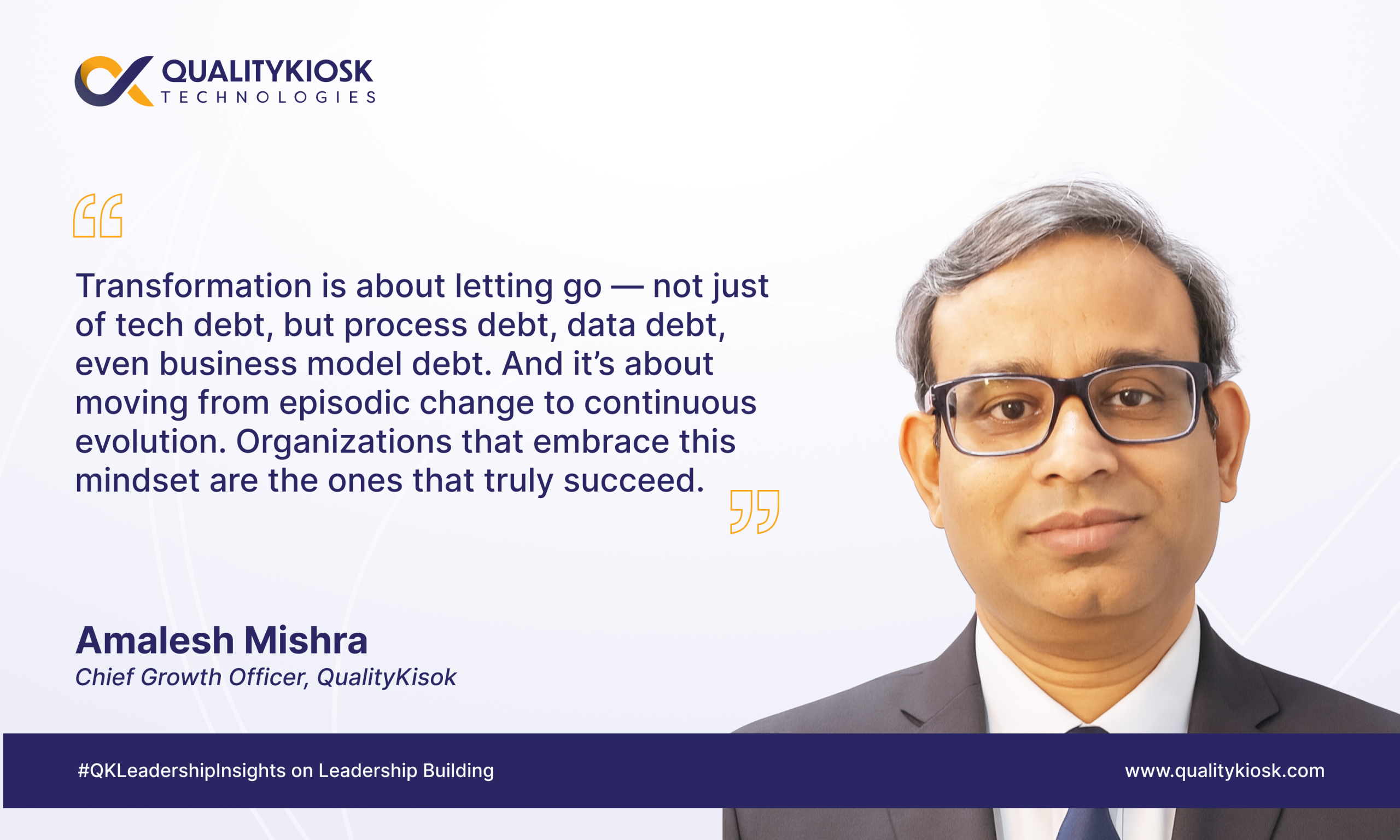It was a pleasure speaking with Puja Sharma of IBS Intelligence on the “IBS INews” podcast. The conversation touched on a topic close to my heart — digital transformation, and more importantly, how to get it right in today’s fast-changing, AI-driven world.
Digital Transformation Isn’t Just Tech — It’s a Mindset Shift
Far too often, I see organizations equating digital transformation with simply modernizing tech stacks or retiring technical debt. That’s only scratching the surface. The real transformation happens when we move from a product-centric to a customer-centric mindset.
Legacy systems often define banking relationships through accounts, but the future is about defining everything through the customer. It’s about understanding individual needs, behaviors, and crafting experiences around those — the way Amazon does so seamlessly.
Transformation is about letting go — not just of tech debt, but process debt, data debt, even business model debt. And it’s about moving from episodic change to continuous evolution. Organizations that embrace this mindset are the ones that truly succeed.
AI’s Role in Reliability – Two Sides of the Same Coin
We are in a pivotal era where AI is not just augmenting how we build and test systems, but also how we ensure those systems remain trustworthy.
We’ve traditionally looked at automation as a way to optimize specific steps. But AI changes the game by acting as a flywheel across the entire lifecycle — from validating requirements, generating test cases, analyzing defects, to improving architecture reliability.
But here’s the critical part: AI itself must be reliable. Inconsistencies in AI outputs aren’t bugs — they’re features. So the same rigor we apply in software testing needs to be applied to AI systems — through guardrails, validation, monitoring, and a strong focus on trust.
Our approach at QualityKiosk balances both aspects: AI for reliability, and reliability for AI. Only then can AI accelerate transformation without risking user trust.
Digital Testing as a Service — Built for Speed and Resilience
With cloud-native architectures, the old model of perfection has evolved. We don’t aim to create systems that never fail — instead, we build for resilience.
We incorporate practices like autonomous testing, chaos engineering, auto-remediation, and continuous validation into what we call Digital Testing as a Service. These help reduce delays in the software lifecycle and catch bugs before they impact users.
The real bottleneck in DevOps today is still testing — with up to 70-80% of enterprise testing being manual. If we can automate not just functional tests but also test data management, environment setup, and service virtualization, we eliminate that bottleneck and accelerate delivery without sacrificing quality.
Balancing Speed with Stability – A Scientific Approach
We resolve this tension by driving deep automation and adopting SRE (Site Reliability Engineering) principles like error budgets and SLOs (Service Level Objectives). These enable a smarter balance: if systems are stable, you can push changes faster. If not, you slow down and prioritize fixes.
It’s all about measuring Mean Time Between Failures and Mean Time to Recovery. We reduce the time to detect, diagnose, and fix — and ensure systems self-heal where possible. That’s what creates resilient, reliable systems.
Rethinking Quality: From Assurance to Reliability
The traditional role of quality assurance — validating functionality before go-live — is outdated. In today’s dynamic environments, quality needs to be engineered across the lifecycle, from development through production.
- Is it available when needed?
- Does it perform under load?
- Is it consistent and reliable over time?
The definition of quality has expanded — and it now directly reflects in the end-user experience. Whether it’s performance delays or functional errors, users experience both as poor quality. So we focus on delivering flawless experiences — experiences built on reliability.
Compliance and Innovation Can Coexist — AI Is the Bridge
In heavily regulated industries like BFSI and telecom, compliance has often slowed innovation. But now, AI is helping us decode compliance into manageable tasks — making it easier to build secure, compliant systems without slowing down innovation.
By embedding AI-powered guardrails, organizations can proactively detect issues, ensure auditability, and innovate in safe environments. Regulation no longer has to be a roadblock — it can become part of the solution.
In Conclusion: Experience Is the New Quality
At QualityKiosk, we believe that the real value lies in enabling organizations to deliver flawless digital experiences. Whether that’s through smarter automation, AI-powered quality practices, or resilient architecture — it all comes down to one thing: reliability.
Digital transformation is not a destination. It’s a continuous journey, and reliability is the compass that keeps us on course.
Let’s stop chasing perfection. Let’s start engineering trust, resilience, and speed — together.
About the Author
Amalesh Mishra is a seasoned growth and strategy leader with over two decades of experience in scaling technology businesses. As Chief Growth Officer at QualityKiosk Technologies since January 2024, he drives corporate strategy, revenue, and market expansion while building a high-performance, innovation-focused culture.
Previously, Amalesh served as Geo Head – APJ, India & MEA at Hexaware Technologies, where he led P&L, engaged with Board and C-level stakeholders, and delivered 5X growth in five years. He has also held leadership roles at HCL Technologies and Hewlett-Packard Enterprise, consistently driving large deals, building strong teams, and achieving significant revenue gains.
His deep tech sector expertise and strategic acumen make him a catalyst for sustained business growth and market leadership.





